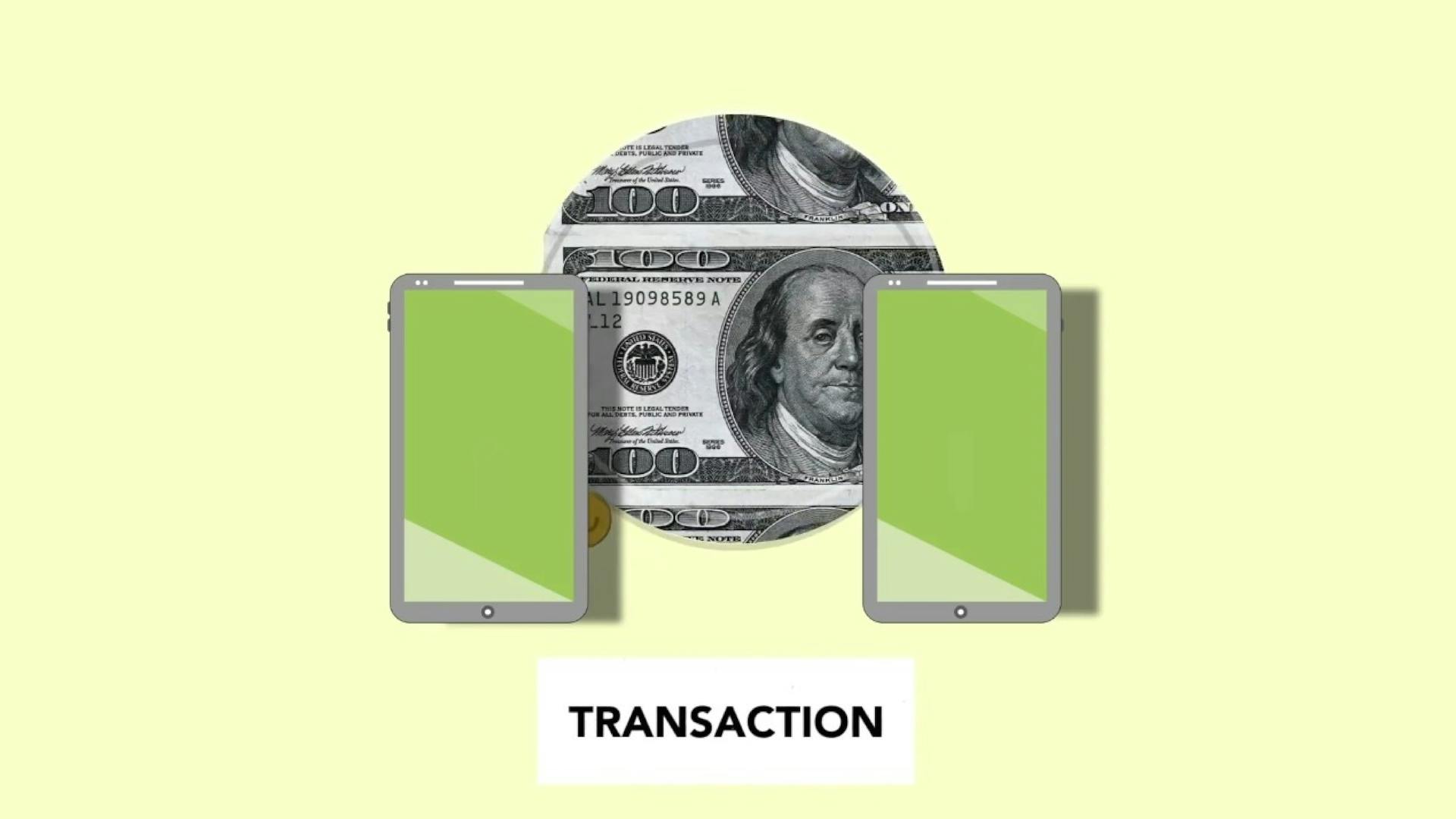
A foreign bank draft is a type of payment that allows you to transfer money from one country to another.
It's essentially a check drawn on a bank in a foreign country, and it's often used for international business transactions or when sending money abroad.
To write a foreign bank draft, you'll need to provide the recipient's name, address, and bank account information, as well as the amount you're transferring.
This information is usually included in the draft itself, and it's essential to get it right to avoid any delays or issues with the transaction.
For your interest: Electronic Money Transfers
What Is a Bank Draft?
A bank draft is a payment issued by a bank on behalf of the payer, which allows another bank to draw funds directly from the bank issuing the draft.
International bank drafts are often used for remittances because the bank draft is immediately converted into a foreign currency when it’s created. This is a big advantage over regular checks.
The exchange rate is a key difference between bank drafts and other payment methods. With a bank draft, the exchange rate is used immediately when it’s created, which means you get the best rate possible.
Bank drafts have no limits, which is a big plus compared to money orders that are usually limited to $1,000.
Many money scams involve fake money orders and cashier’s checks, but bank drafts can be verified by contacting the issuing bank and providing the details on the bank draft itself. This makes bank drafts a safer option.
Here are the key differences between bank drafts and other payment methods:
- Exchange rate: Bank drafts use the current exchange rate when created, while money orders and cashier’s checks use the exchange rate when cashed.
- No limits: Bank drafts have no limits, while money orders are usually limited to $1,000.
- Safety: Bank drafts are typically safer than money orders and cashier’s checks, which can be used in scams.
How Drafts Work
A foreign bank draft is a written order that facilitates the transfer of funds from one country to another. It's essentially a bill of exchange that's drawn in one country and made payable in another.
The issuing bank guarantees payment after reviewing the issuing account for sufficient funds, making it a reliable credit instrument. This is achieved by depositing funds equal to the check amount and applicable fees with the issuing bank.
On a similar theme: Where Can I Cash a Capital One Bank Check
A bank draft is created as a check to the payee drawn on the bank's account, noting the remitter's name, but with the bank appearing as the entity making the payment. This process ensures that the funds are transferred securely.
The time taken for the money to be remitted through a foreign currency bank draft is generally between 7-28 days. This can vary depending on the specific circumstances of the transaction.
If a bank draft is lost, you can always request a duplicate. This is a convenient feature that provides peace of mind for users of foreign bank drafts.
Key Information
A foreign bank draft is a bank draft established at a foreign bank to pay a transaction in the foreign currency.
You can use a foreign draft to avoid purchasing foreign currency or volunteering information required for an international wire.
Foreign drafts come with fees that must be paid to the foreign bank, so be prepared for some extra costs.
A foreign currency bank draft is a low-cost option, though you'll still need to pay a minimal fixed charge and applicable service tax.
The beneficiary's details are always mentioned on a foreign currency bank draft, making it difficult for them to be misused.
You can issue a foreign currency bank draft in various currencies, including USD, GBP, EUR, AUD, SGD, and more.
The amount you can draw on a foreign currency bank draft is limited by the Foreign Exchange Management Act (FEMA) rules.
Here are some common types of foreign currencies used in bank drafts:
- USD (United States Dollar)
- GBP (British Pound)
- EUR (Euro)
- AUD (Australian Dollar)
- SGD (Singapore Dollar)
Sending Large Payments Overseas Securely
Sending large payments overseas securely can be a challenge, but bank drafts are a reliable option. They're typically used for large payments, and are accepted in most countries.
A bank draft is similar to a cashier's check, but it's specifically designed for international transactions. It's not the quickest way to send money, but it gets the job done.
Readers also liked: Quickbooks Online Payments Bank to Bank
To use a bank draft, you'll need to visit your bank and fill out a draft request form. The bank will then verify your account and create the draft, which can take a few days.
Here are the steps involved in sending a bank draft:
- Fill out a draft request form at your bank
- The bank verifies your account and creates the draft
- The draft is then sent to the recipient
Bank drafts are a secure way to send large payments, but they do have some drawbacks. One of the main cons is that they can take a few days to process, which can be inconvenient if you need to send money quickly.
It's worth considering whether a bank draft is the best option for your needs. If you need to send a large payment overseas, it's definitely worth looking into.
Comparing and Choosing
Fees are the most important factor to look at when comparing bank drafts, so be sure to check the different fees charged by each provider.
When comparing bank drafts, it's essential to consider the available currencies and countries supported by each financial institution. If your bank doesn't support bank drafts in your desired foreign currency, you may need to explore international money transfer options.
Consider reading: Bank over Draft Fees
Processing time and application options are also crucial factors to consider when choosing a bank draft. Look for a provider that offers a quick processing time and convenient application methods, such as online or in-branch applications.
Here are the key factors to compare when choosing a bank draft:
- Fees
- Available currencies and countries
- Processing time
- Application options
How to Compare
When comparing bank drafts, fees are the most important factor to consider. You can save money by choosing a provider with lower fees, such as a $30 fee compared to a money transfer service with no fees.
To get an idea of the fees involved, check the exchange rate and transfer speed of different providers. For example, a bank draft may have a slower transfer speed of 1-3 weeks, depending on mail, compared to a money transfer service which can have a transfer speed of 1-2 days.
It's also essential to consider the available currencies and countries supported by each provider. Some banks may not support bank drafts in your desired foreign currency, so compare international money transfer options to send a transfer online.
Consider reading: Debit Card with No Foreign Atm Fees

To apply for a bank draft, you typically need to visit a branch or apply in writing. However, some providers may offer online application options, which can save you time and effort.
Here are some key factors to consider when comparing bank drafts:
- Fees: Look for the lowest fees charged by each provider.
- Available currencies and countries: Check if your bank supports the foreign currency you need and the countries you want to send to.
- Processing time: Compare the transfer speeds of different providers to ensure you get your money to your recipient quickly.
- Application options: Choose a provider that offers online application or other convenient options.
Who Researches Bank Drafts?
Men aged 45-54 are most likely to be researching international bank drafts.
Looking at the data, it's clear that men in this age group are taking the lead in understanding bank drafts.
Interestingly, men in this age group make up 12.31% of those researching bank drafts, more than any other demographic.
Here's a breakdown of the data:
It's worth noting that while men in this age group are the most likely to be researching bank drafts, there are still many men in other age groups who are also taking an interest in this topic.
Pros and Cons of Bank Draft
Bank drafts have been a reliable method for sending funds overseas, but like any other payment method, they have their advantages and disadvantages.
One major advantage is that bank drafts are accepted in most parts of the world, making them a versatile option for international transactions.
Another benefit is that bank drafts are relatively inexpensive, with a one-time fee when applying for the draft.
A significant advantage is that bank drafts are created in the local currency, eliminating the need for conversion and allowing for quicker banking.
Bank drafts are also secure, as they must be deposited into a bank account and cannot be cashed.
Here are some key pros of bank drafts at a glance:
- Accepted in most parts of the world
- Inexpensive
- Created in the local currency
- Secure
While bank drafts have their advantages, they also have some drawbacks.
One major disadvantage is that bank drafts can be slow to process, taking several weeks to complete.
Another issue is that bank drafts may not be supported by your bank, depending on the currency and country you're sending to.
Replacing a lost bank draft can also be a time-consuming process, with each bank having its own procedure.
Suggestion: Bank Drafts
Transfer Process
The transfer process for a foreign bank draft is relatively straightforward. You can download the bank draft request form, which typically asks for your name, address, and other essential details.
The form will also ask for the recipient's information, including their name and address. This is crucial to ensure the bank draft reaches the right person.
Time taken for the money to be remitted is generally between 7-28 days. This can vary depending on the bank's processing time and the destination country's clearance procedures.
If you've lost your bank draft, don't worry. You can always request for a duplicate.
Here's a quick overview of the process:
- Download the bank draft request form
- Fill out the form with your and the recipient's information
- Submit the form to your bank
- Wait for the bank to process and send the bank draft
Frequently Asked Questions
How do I get an international bank draft?
To obtain an international bank draft, visit your nearest bank branch and submit the required documents. Charges may apply for transfers between countries.
How long does an international bank draft take to clear?
International bank drafts typically take 1-5 business days to clear, but the exact timeframe may vary depending on several factors. For a more detailed estimate, please see our international transfer guidelines.
What is overseas draft?
An overseas draft is a written order to pay a specific amount to a third party, similar to a check but usable internationally. It's a secure way to transfer funds across borders.
Sources
- https://www.acledabank.com.kh/kh/eng/ps_cmbankdraft
- https://www.investopedia.com/terms/f/foreign-draft.asp
- https://www.finder.com/international-money-transfers/international-bank-drafts
- https://www.dbs.com/in/treasures/en_us/nri-banking/remittance/send-money-to-india/by-dd
- https://www.abchina.com/en/personal/settlement/exchange/fedddd/
Featured Images: pexels.com


